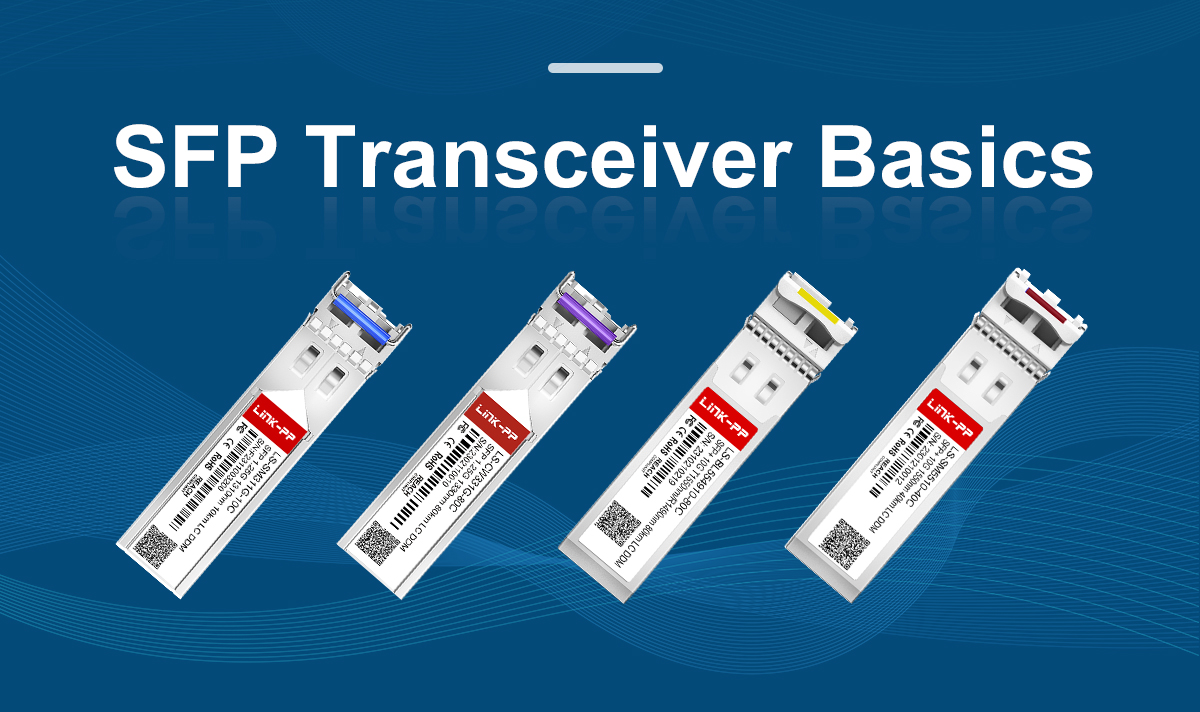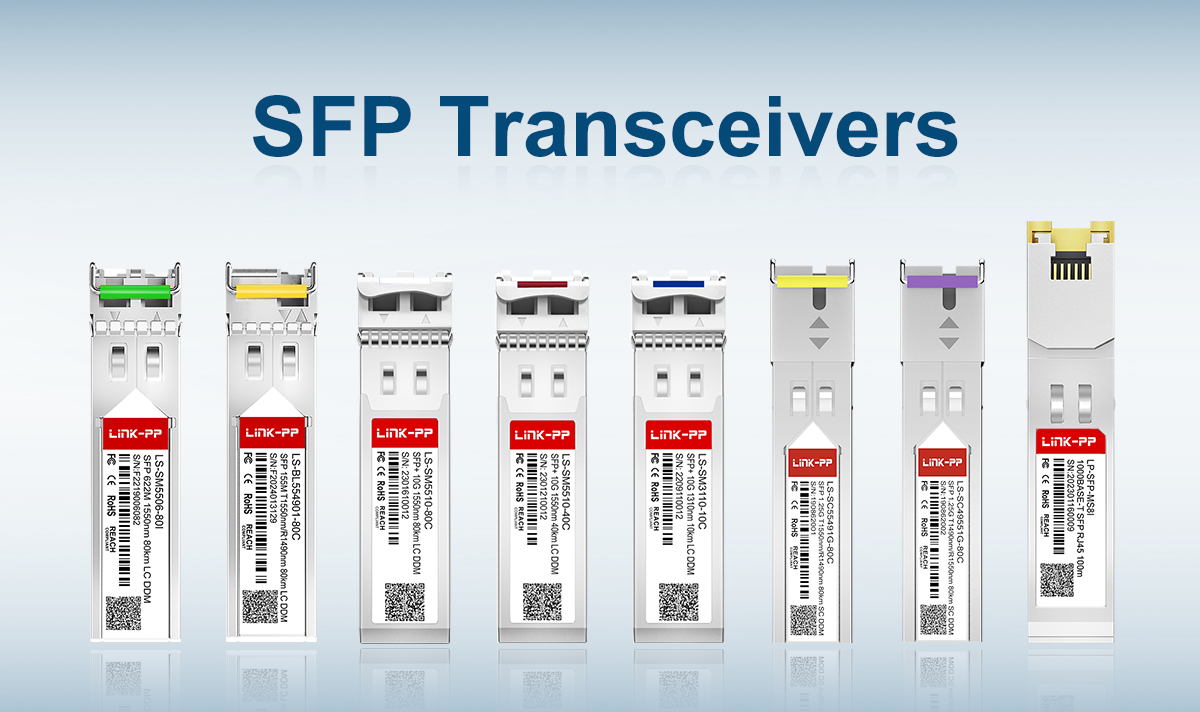
1. What Is an SFP Transceiver?
An SFP (Small Form‑factor Pluggable) transceiver is a compact, hot‑swappable module that fits into a switch, router, or media converter. It converts electrical signals into optical (or copper) signals and vice versa. An SFP transceiver acts as a compact, hot-swappable optical transceiver that connects your networking equipment to fiber optic or copper cables. Defined by the Multi‑Source Agreement (MSA, e.g. INF‑8074i), SFPs support Gigabit Ethernet, Fiber Channel, and SONET/SDH protocols.
2. Why SFP Matters in Networking
Flexibility and scalability: Easily upgrade or change ports without downtime.
High port density: More connections per switch thanks to their small size.
Cost‑efficient: Mass‑production keeps prices lower than older GBIC or XFP modules.
3. Types & Use Cases: Choosing the Right SFP
Multimode vs. Single‑mode fiber:
Short-range (e.g. 850 nm SX MMF up to ~550 m);
Long‑range (e.g. 1310 nm LX up to ~20 km, EX ~40 km, ZX ~80 km).
Copper SFP modules: Use RJ‑45 for Ethernet over copper (max ~100 m), suitable for short cabling needs.
SFP vs. SFP+ and beyond:
SFP: Up to ~1 Gb/s;
SFP+: Supports 10 Gb/s; further form factors like SFP28 or QSFP evolve for higher speeds.
4. Compatibility & Standards: Avoiding Pitfalls
MSA‑compliant modules ensure physical and electrical compatibility across vendors.
Check vendor lock‑in issues: some equipment may reject non‑OEM optics, even if standards‑compliant.
Ensure matched type, wavelength, and fiber: e.g. LC connectors, duplex vs. BiDi (wavelength multiplexed) modules must pair correctly.
5. Diagnostics & Health Monitoring (DDM)
Most modern SFP/SFP+ modules support Digital Diagnostics Monitoring (DDM)—also called DOM. They monitor temperature, voltage, optical power, and other metrics in real time. This helps engineers detect issues early and maintain uptime.
6. Installation & Practical Tips
Hot‑pluggable: Insert or remove without rebooting the network device.
Handle with care: Avoid touching the fiber interface or gold fingers. Use dust caps and clean fiber end‑faces before insertion.
Maintain logs: Record module types, insertion dates, and warnings from DDM to track performance over time.
7. LINK‑PP SFP Modules: Reliable & Standards‑Ready
LINK‑PP offers a wide range of MSA‑compliant SFP and SFP+ transceivers, including single‑mode and multimode options. Their modules deliver excellent value and support features like DDM, consistent optical performance, and vendor‑neutral compatibility. Find certified products in the LINK‑PP official store here: l‑p.com.

8. Summary Table
Topic | Key Insight |
|---|---|
Definition | Compact, hot‑pluggable optical/copper transceiver |
Data rates | Up to 1 Gb/s (SFP), 10 Gb/s (SFP+) |
Fiber types | Multimode (short), Single-mode (long) |
Compatibility | MSA‑compliant, same vendor constraints, wavelength match |
Diagnostics (DDM) | Temperature, power, voltage monitoring |
Practical care | Dust caps, gentle handling, cleaning |
LINK‑PP strength | Reliable standards compliance, DDM support, cost‑efficient |
9. Conclusion
An SFP transceiver is a foundational component that brings flexibility, scalability, and performance to modern networks. For network engineers, understanding module types, compatibility, diagnostic features, and proper handling ensures smooth operation. LINK‑PP’s SFP/SFP+ portfolio meets industry standards and offers dependable quality—ideal for data center, enterprise, or telecom environments.
10. See Also
Want to expand your understanding of optical networking and SFP+ deployment best practices? Explore these expert resources from the LINK‑PP Knowledge Center:
DDM vs DOM in Optical Transceivers: What’s the Difference?
Understand how Digital Diagnostics Monitoring (DDM) and Digital Optical Monitoring (DOM) help ensure module health and link reliability.Understanding Copper SFP Modules in Networking
Learn how RJ45-based SFP modules fit into high-speed Ethernet networks and how they compare to optical solutions.SFP vs SFP+: Key Differences Explained
A technical yet clear comparison of SFP and SFP+ modules, including use cases, speeds, and backward compatibility.Single-Mode vs. Multimode Fiber: A Complete Guide
Discover how fiber type affects transceiver selection, reach, and performance in enterprise and telecom environments.What Is a Network Switch? A Beginner-Friendly Overview
For newcomers or refreshers—understand the switch’s role in handling Ethernet traffic and connecting SFP+ uplinks.




